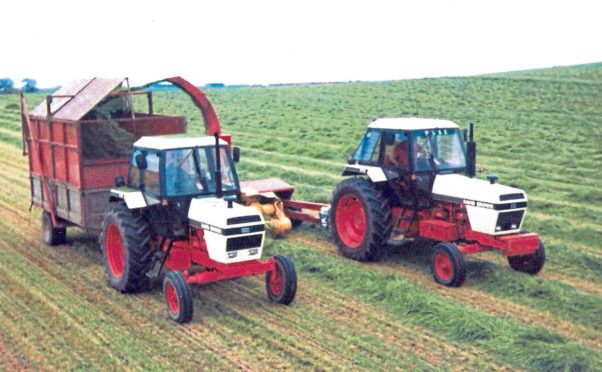The very last range of tractors to carry the David Brown name arrived 40 years ago when the 90 Series launched, writes Pete Small
The 90 Series of David Brown tractors was launched at a plush hotel in Monte Carlo on September 26 1979.
UK dealers were flown out for a preview of the five models of the new range being displayed on several floors of the hotel.
These David Browns joined the larger American models from the parent Case company.
This gave David Brown UK coverage in the smaller horsepower market for smaller livestock farms where its sales had always been strong.
Now, with four larger Case models, which included an articulated model at the top end of the range, they had something to offer the larger arable operations too.
These Case models were the 120hp 2090, the 139hp 2290, the 2390 at 160hp and 4690 at 220hp.
Meanwhile, the David Brown models included the baby of the range – the 1190 which was rated at 48hp and replaced the 885 model.
Next was the 1290; at 58hp this model replaced the long available 990 model. Replacing the 995 and 996 models was the 67hp 1390.
The 1490 was rated at 83hp and replaced the 1210/1212 and 1410/1412 models and finally coming in as a completely new addition to the range was the 1690 model which was rated at 103hp.
The most noticeable thing about these tractors was the new squared-off tin work to come in line with the Case styling and a vastly more modern and roomier Sekura safety cab.
Further improvements included larger fuel tanks. Easier access for servicing was achieved by the repositioning of various filters and refuelling could be done from ground level.
Improved radiators, water pumps and clutches were fitted, as were new types of seals and valves. A simpler single-lever hydraulic control system was another change.
Live PTO was fitted across the range with both 540 and 1,000rpm available and a separate clutch control to stop the drive.
Power steering was fitted throughout, while from the 1290 model upwards a larger flow hydraulic pump was fitted.
Category I and II linkage was available on the 1190, 1390 and 1290, and the other two had Category II only. Improvements were also made to the braking systems.
As far as engines went, the 1190 was fitted with what was basically the old 885 power unit, while the 1290 went with the proven unit used in the 990.
The engines used in the 995 and 996 models were uprated to power the 1390. A de-rated turbo charged engine from the 1210/12 and 1410/12 tractors was used on the 1490.
The 1690 power plant was a completely new, naturally aspirated six-cylinder affair. David Brown’s award-winning Hydra Shift transmission was an option offering clutchless gear changes.
The four largest tractors also had the option of a four-wheel-drive system.
The cabs featured tinted glass, sun visor, a heater ventilator unit and a roof hatch.
Case David Brown, which had invested £17.8 million over three years in the David Brown plant, was ready to enter the 1980s looking at wider markets.










